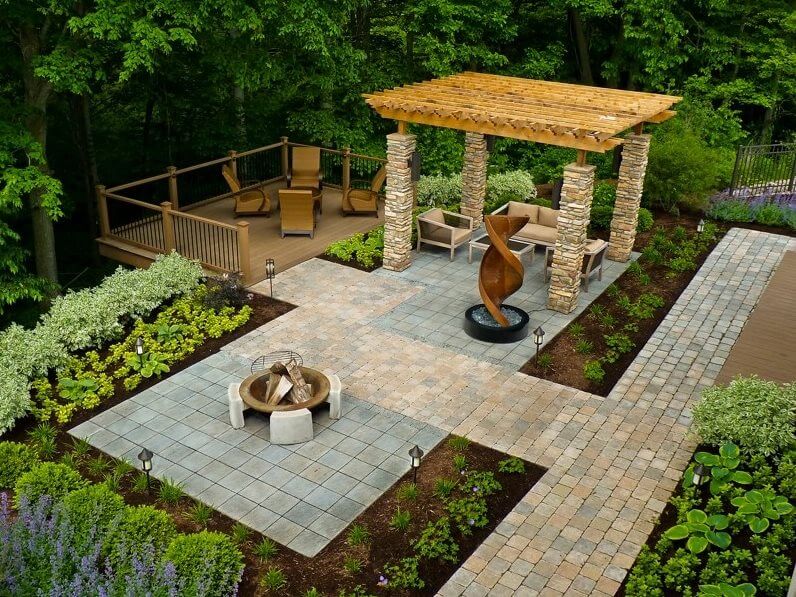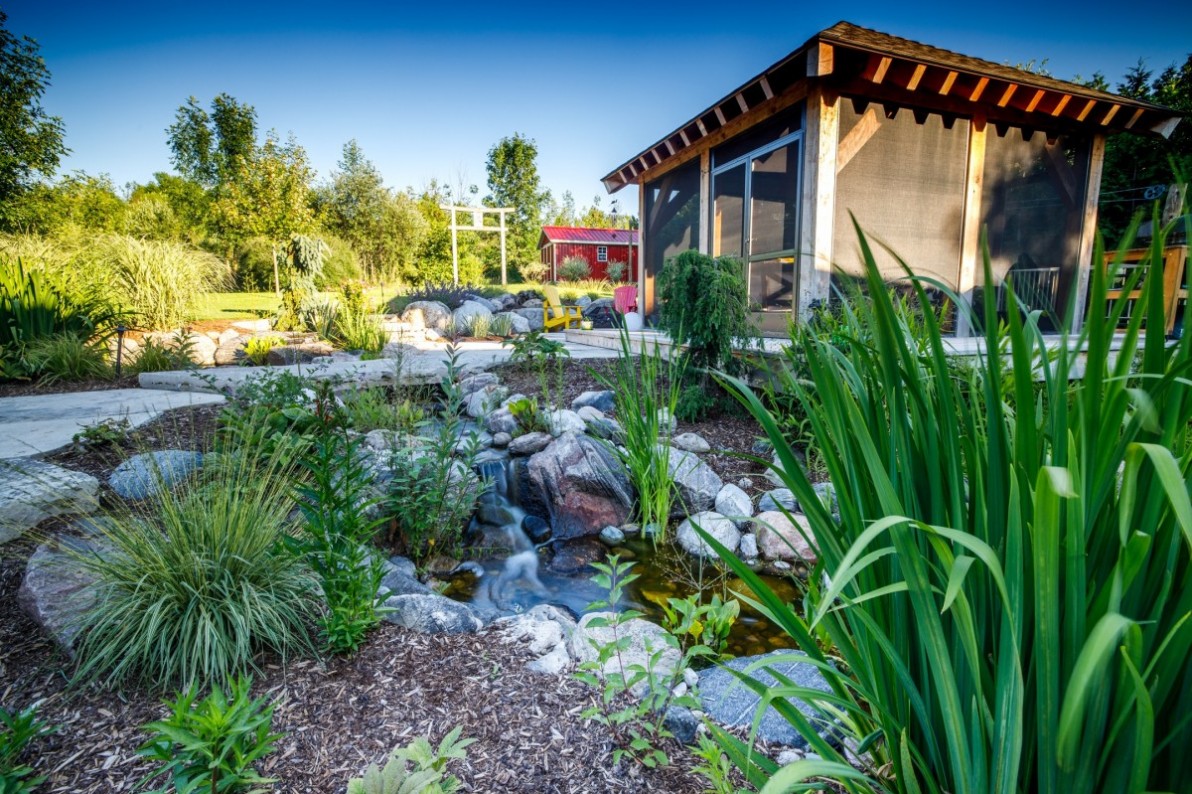Rumored Buzz on Landscapers
Table of ContentsThe Basic Principles Of Landscapers An Unbiased View of LandscapersSome Of LandscapersNot known Facts About LandscapersLandscapers Things To Know Before You Get ThisAn Unbiased View of Landscapers
- A yard function where water is represented by an aggregate rock item, generally a crushed rock or granite.- A rock or natural flagstone patio area, path, or sidewalk constructed without a concrete base.- A stone retaining or cost-free standing wall developed without the use of mortar. - An underground structure that collect water and permits it to slow percolate into the dirt around it.
Landscape layout that works with a websites' atmosphere in both appearance and sustainability without negative impacts to the environment. Interrupting the landscape is a line of separation that produces visual rate of interest in the yard by separating one segment from one more section. This can be visual or useful, keeping one aspect (such as pea crushed rock) from obtaining blended into another (like bark dust).
Locations can also have a feeling of "unit" supplied by trees, various other growings, fencings, or screens. The landscape near the access to a structure.
4 Easy Facts About Landscapers Described

The aspect in a landscape layout or area in a landscape that is meant to be most prominent. The focal point can be a plant, rock, sculpture, gathering room, or other landscape function. A design of yards or yard elements that emphasize straight lines, appropriate angles and circles. Shrubs or hedges found in beds near the structure of a home or various other structure.

The Best Guide To Landscapers
Rock item, either rounded or fractured, that is fairly tiny- typically 1" or much less. Reduced plants that are enabled or motivated to top a location. Can describe any kind of "hard" yard elements consisting of statuary or rocks but the majority of typically is used to refer to courses, patios, and walls.: Elevation difference in between the degree of water in a fish pond (or the level of the pump if it rests outside the fish pond) and the top outlet of water which influences performance of the water pump in gph (gallons per hour). Thick shrubs or trees that form a fencing, display, or boundary.
A chemical made use of to regulate weeds. Fence boards that run horizontally, commonly utilized in contemporary or Japanese-inspired landscape layouts. Lines that specify areas within a landscape idea. These often expand from corners or key functions of an existing structure. Appropriate use fictional lines can help the landscape feel attached to the home and other elements.
A more unwinded yard controlled by curved as opposed to straight bed lines and a much less inflexible framework. Conventional PNW landscapes are casual. A plant that spreads even more than preferred, or into environments where it does damage. Rose city has a listing of invasive plants that need to not be installed in landscapes since they can spread out to woodlands or rivers and be tough to manage.
Things about Landscapers
Smart irrigation controller reviews and pop over to these guys recommendations here. 2-D making of the recommended irrigation system. Can include head placements and protection, pipeline sizing, GPM specifications, and products needed to mount this system. An irrigation strategy is normally unnecessary for residential buildings yet prevails for commercial jobs. Certified specialist who makes landscapes, educated in engineering and architecture in addition to in gardening.
The specialist who prepares and creates landscape tasks, normally at a residential or tiny business level with the major layout motivation on plantings. Landscape designers commonly have much less education than Landscape Architects and are not accredited. A finished landscape design, describing all components for the new landscape. This generally takes the type of a drawing theoretically.
Utilizing several growings of the very same range to fill in an area in the landscape. This see it here can decrease maintenance and water usage in the garden.
A mix of concrete, sand, and water that is used in rock masonry for setting stones and joints. A layer of compost or bark dust used at the base of a plant. A mass planting of moss. A plant that existed in a geographical area site prior to people began transforming the landscape.
Unknown Facts About Landscapers
Exactly how the yard or a garden component is arranged in partnership to an existing or new attribute or to an instructions. Turfs that are not mowed yet grown in landscapes as perennials.

Little round gravel. Plants that give seasonal interest and after that pass away back in the winter season. Annuals do not return the following period, yet perennials do. Winter season yard that is one of the most typical turf yard in Portland, OR et cetera of the PNW.An open roofed framework over a patio or other landscape function.
Lava accumulated varying in dimension from 1/4" down to dirt. The most typical landscape crushed rock in the PNW. Location of the landscape created to deal with water up until it can soak into the ground. A chain that regulates water as it travels from a roofing gutter to the ground. Garden framework that creates a growing area that is consisted of and higher than the bordering quality.
Producing a yard function consisting mainly of rocks with plantings that match and can prosper in the rough setting. Lawn sprinkler head style that revolves a stream of water throughout a location.
The Only Guide to Landscapers
